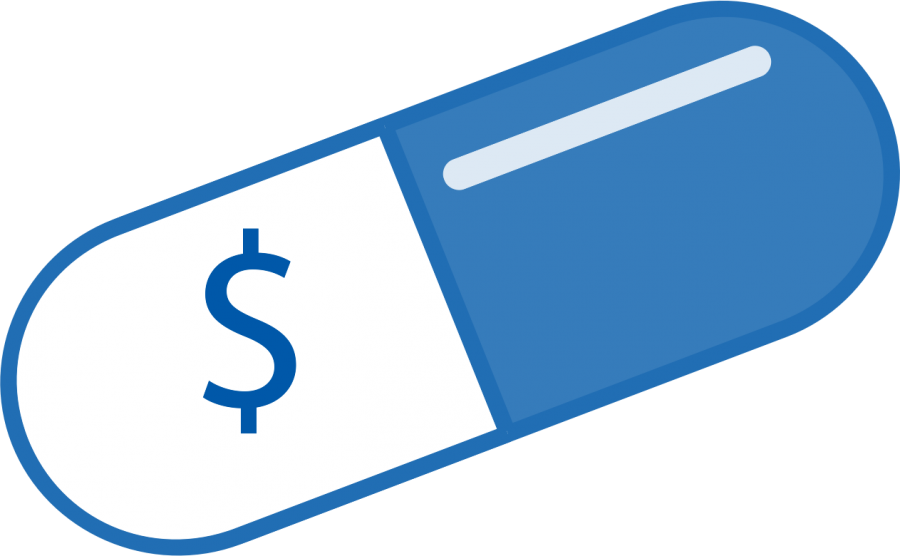Slowing, stopping the rising cost of prescription drugs
Almost half of the population in the United States are currently taking prescription drugs.
Having to take prescription drugs and medications should not be a burden on anyone, but in reality, it is. Many people taking prescription drugs in the United States have to make a choice between purchasing their medications, paying for their house, or even buying food for the week.
As of 2020, due to the rising prices of prescription drugs, 17% of people taking prescription drugs postpone paying bills and 23% do not refill their medications.
While some may say if people would take better care of themselves, they wouldn’t have to take medications, this is not the case for most of the people taking prescription drugs.
Insulin, for example, is a life-saving drug for diabetics. It is not a medication that can be ignored or rationed, and it can determine if diabetics can continue living a happy, healthy life or lose their life within a week.
Another example of a necessary medication is Xarelto. Xarelto is a blood thinner medication that can lower the risk of stroke, deep vein thrombosis, pulmonary embolism, and many other similar conditions. If ignored, it can also lead to hospitalizations or death.
Regardless of the importance of a prescription drug, the price has likely increased over time.
The price of insulin, a life-saving drug for diabetics, has increased by at least 24% over the past 6 years. Not only has the price of insulin increased in the United States, but the United States also has tremendously higher cost of prescription drugs than in other countries. The cost of insulin per dose is 247% higher in the United States than in other countries.
Humira, an anti-inflammatory drug, is the best-selling prescription drug in the world. Although it is the best-selling prescription drug, many cannot afford it due to its high prices. For a month supply of Humira, it costs patients over $5,500 and this price is continuously rising.
While the increase in prices is astronomical, it is important to look at the reasons for this increase to understand how to further lower the cost of prescription drugs.
One of the most prevalent factors is the creation and expansion of Pharmacy Benefit Management firms, or PBMs. When PBMs were first created in 1968, they were an independent third-party mechanism to control the costs of prescription drugs. As PBMs continue to grow, the lines are blurred between their functions of managing prescription drugs and selling them. Furthermore, PBMs require accreditation and credentialing on all prescriptions, which adds to the price of prescription drugs. Another factor is the limited knowledge insurances and physicians have regarding alternative prescription drugs. Once a physician prescribes a prescription drug to a patient, it is also hard for patients to switch to a lower cost alternative.
It is important to not only examine the factors for price increases in the United States, but also compare the United States prescription drug economic system to that of other countries. The United States uses a free market when it comes to the economy. Having a free market allows privately owned businesses to determine their own prices of their products.
While this benefits the production of many products, it increases the prices of prescription drugs. In other European countries with lower average cost of prescription drugs, the government plays a larger role in determining the prices. In countries such as France, Germany, Sweden, and the United Kingdom, the government either currently has or previously had controls to limit the increase of prescription drug prices and expenditures. Different forms of government control in prescription drugs include universal prescription drug benefits and coverage, product-by-product price controls, limits on insurer’s reimbursement levels, and profit controls. With these different restrictions, prescription drugs are not only affordable, but also much cheaper than the costs in the United States.
One method to decrease the cost of prescription drugs would be enacting a reference pricing program. This method has been adopted in several European countries and has resulted in a 7 to 24% price reduction. A reference pricing program would allow physicians and patients to be notified and aware of the lowest cost of the clinical equivalent of the prescription drug they are currently prescribing or using. Often in a reference pricing program, an insurer establishes a maximum payment they will pay towards a certain product. This influences physicians and patients to switch to a lower cost alternative as well.
Another proposal is for the Department of Health and Human Services secretary to negotiate a price for prescription drugs based on the prices of international prescription drugs. This method would compare the average international market price from countries such as Australia, Canada, France, Germany, Japan, and the United Kingdom. Similar to the international market price negotiation, a fair drug price negotiation would establish a maximum fair price for prescription drugs within the United States. Considerations towards this negotiation would include research and development costs of specific prescription drugs as well as the cost of production, information of the value of alternative prescription drug treatments, and domestic and internal sales information.









